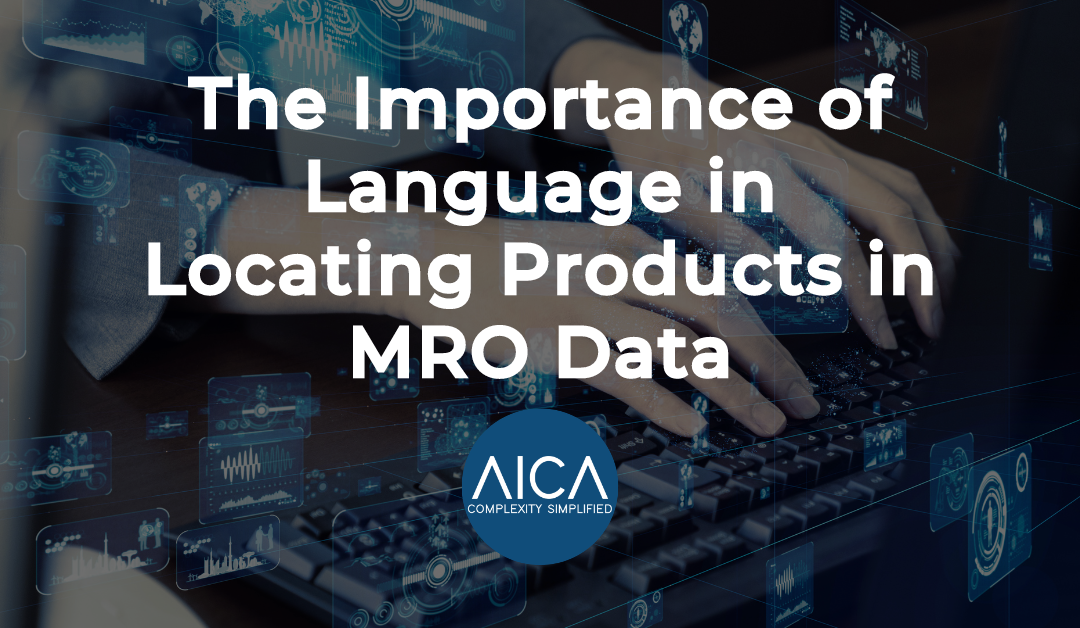In the MRO, effective product identification is crucial for streamlining operations and maintaining efficient supply chains. One often overlooked yet vital aspect of this process is the language used in selling and categorising MRO products. Clear, precise language not only facilitates accurate product identification but also enhances overall operational efficiency.
This article delves into the significance of language in locating products within MRO data, highlighting key benefits and best practices.
Enhancing Product Identification
MRO operations involve a vast array of products, ranging from simple fasteners to complex machinery. Accurate identification of these products is paramount to ensure that maintenance and repair tasks are performed promptly and correctly. The use of standardised, descriptive language in product listings and catalogues helps eliminate ambiguity, making it easier for personnel to find the exact items they need.
For example, a common issue in MRO data management is the use of varying terminologies for the same product. One team might refer to a component as a “bolt,” while another might call it a “screw.” By adopting a standardised naming convention, such discrepancies can be minimised, leading to quicker and more accurate product searches.
Improving Data Accuracy and Consistency
Consistency in language use is essential for maintaining accurate MRO data. Inconsistent or vague descriptions can lead to data entry errors, resulting in misplaced inventory and increased downtime. Standardising the language used in product descriptions ensures that all stakeholders have a clear understanding of what each item is, reducing the risk of errors.
For instance, specifying dimensions, material types, and specific functions in product descriptions helps create a uniform database that can be easily navigated. This not only aids in product location but also in inventory management, as consistent data allows for more accurate tracking and forecasting of inventory needs.
Facilitating Better Communication
Effective communication is key in any operation, and MRO is no exception. Clear and precise language in product descriptions and catalogues facilitates better communication between different departments and teams. Maintenance staff, procurement officers, and suppliers all benefit from a shared understanding of product specifications and requirements.
When everyone is on the same page regarding product terminology, it reduces the likelihood of miscommunications and misunderstandings. This is particularly important in scenarios where timely procurement of specific parts is critical to avoid operational disruptions.
Enhancing Searchability and Efficiency
The use of structured and descriptive language significantly enhances the searchability of MRO products within a database. Advanced search functions, such as keyword searches and filtering options, rely heavily on the quality of the language used in product descriptions. When descriptions are clear and detailed, it becomes much easier to locate specific items quickly.
For example, a well-documented MRO database might include attributes such as part numbers, manufacturer details, material specifications, and intended use cases. These attributes, when consistently applied, allow for efficient searching and retrieval of products, saving valuable time and resources.
Best Practices for Implementing Effective Language Use
To harness the benefits of precise language in MRO data, organisations should consider the following best practices:
1. Standardise Terminology: Develop and enforce a standardised set of terms for product descriptions. This could involve creating a glossary of approved terms and ensuring all stakeholders are trained on its use.
2. Detailed Descriptions: Encourage the use of detailed descriptions that include all relevant attributes of a product, such as dimensions, materials, and specific uses. If these descriptions are not in place, use a tool to automate the creation of long and short descriptions.
3. Regular Audits: Conduct regular audits of MRO data to ensure consistency and accuracy in product descriptions. This helps identify and correct any discrepancies or errors.
4. Collaboration: Foster collaboration between different departments to ensure that the language used in product descriptions is universally understood and accepted.
5. Technology Integration: Utilise advanced software such as the one we at AICA offer that helps pinpoint language errors and much more in your MRO data.
Conclusion
By adopting standardised, descriptive language, as well as advanced technology, organisations can significantly improve MRO operations. Investing in the quality of language used in MRO data is a strategic move that can yield substantial long-term benefits for any organisation.
To find out more about AICA’s services and how we can benefit your organisation – visit our website here.
Copyright Reserved © AICA Data International Ltd 2024

